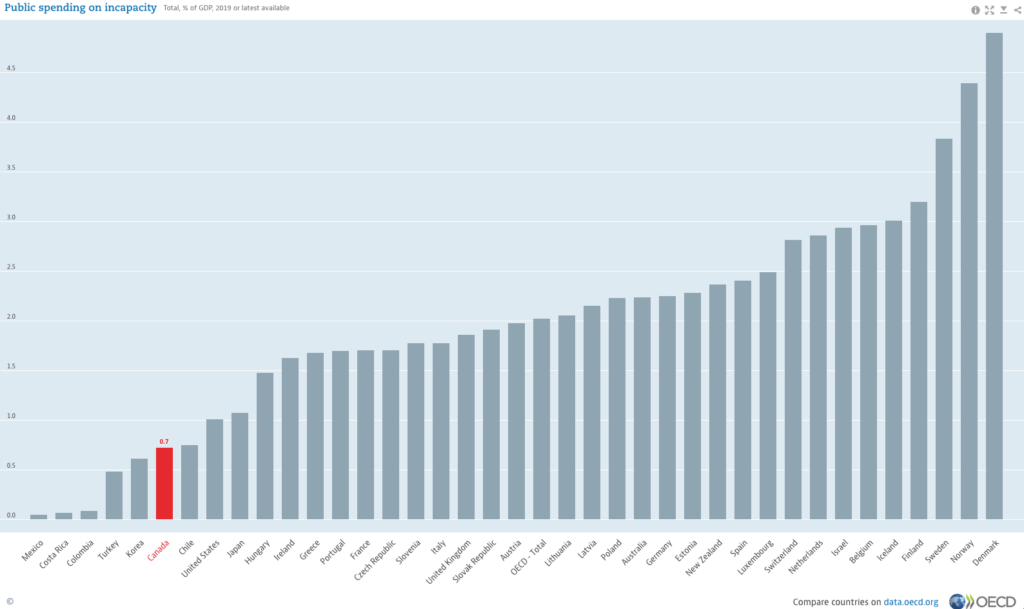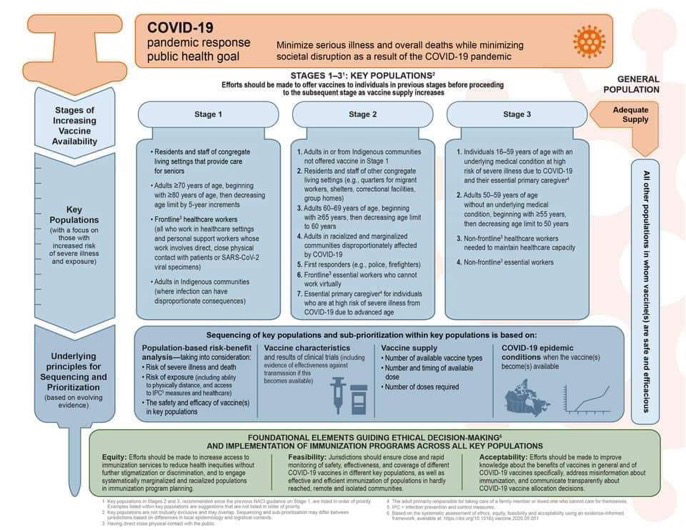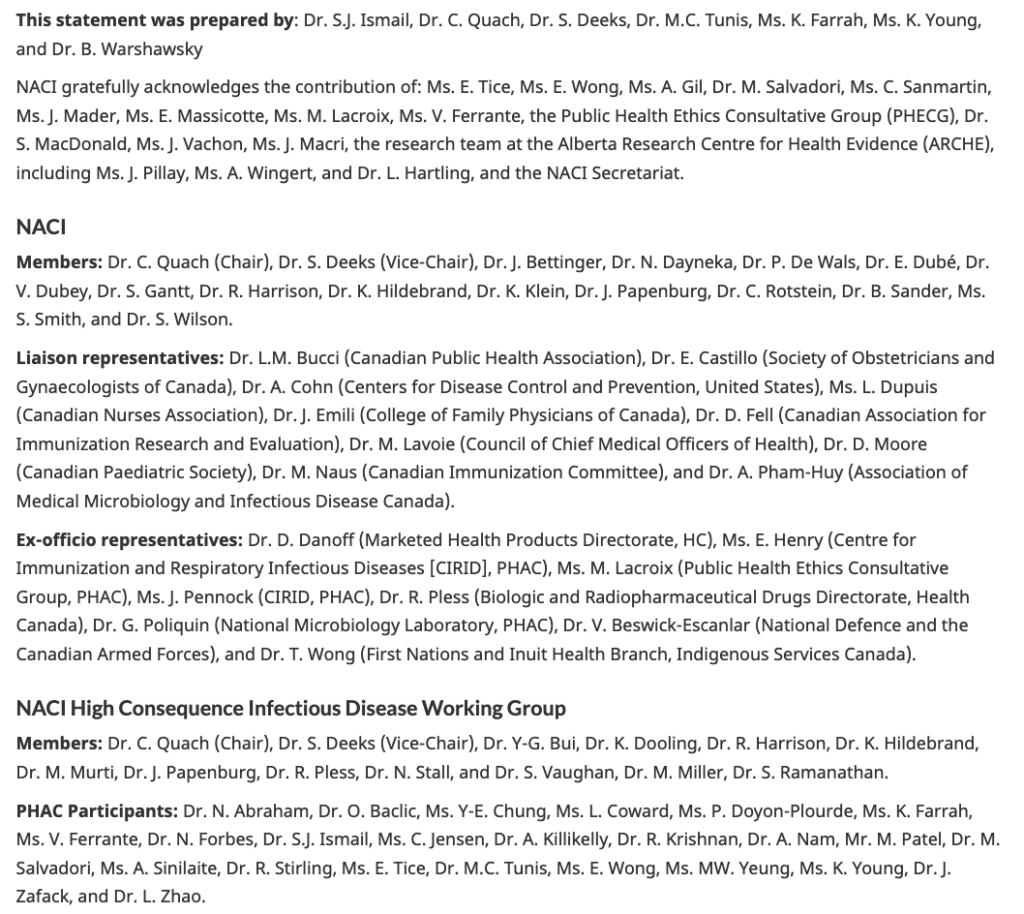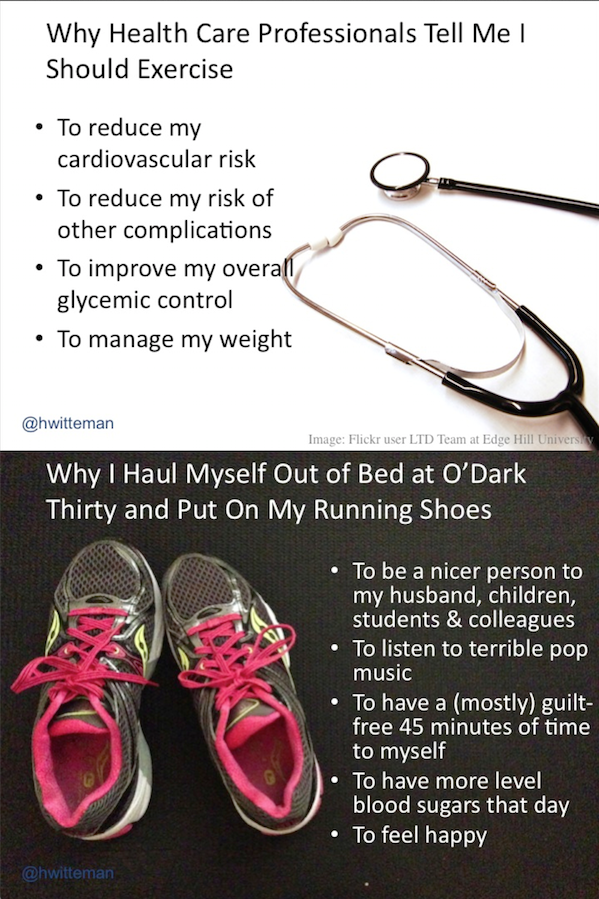The following presents the contents of a tweet thread I posted today (available here). I am also posting it here in blog form because I know that not everyone is on Twitter and/or is able to access tweet threads.
The appalling ableism in health care, government, academia, and society is even more evident than usual in this pandemic. Canada is one of the worst offenders. It’s hard to take.
This is not surprising, as we already knew that Canada does poorly compared to other countries when it comes to supporting disabled people. For example, we do very poorly on, “spending due to sickness, disability and occupational injury.” https://data.oecd.org/chart/6hja https://data.oecd.org/socialexp/public-spending-on-incapacity.htm

So it shouldn’t be a surprise. But the pandemic-time hits just keep coming.
Example 1: The federal government rapidly rolled out the $2000/month Canada Emergency Response Benefit program last year. Applying required almost no paperwork. (I know this because my husband was furloughed and eligible for the program.)
Meanwhile, a one-time $600 benefit (nowhere near 2k/month) for disabled people who had already filed a bunch of medical paperwork or somehow managed to get detailed medical evaluations done during a pandemic was extremely slow. https://www.ctvnews.ca/health/coronavirus/long-promised-disability-aid-payments-to-be-made-in-the-fall-1.5053749
Example 2: The current federal govt has twice campaigned on visions of pharmacare, but has not enacted it when elected. Canada’s system primarily funds in-hospital/in-clinic care. Most provinces do not fund most medications, supplies, & durable medical equipment for adults 18-64.
In a pandemic, when many people have lost their jobs and/or employer-based supplemental health benefits, this lack of publicly-funded programs has greater impact. https://www.cbc.ca/news/canada/manitoba/manitoba-diabetes-medication-layoffs-covid19-1.5837862
While many Canadians are grateful that their hospital stay that one time was taxpayer-funded, people with chronic diseases & disabilities often have a different experience of Canada’s health “system”.
Example 3: Disabled people’s caregivers have had to fight like heck just to be able to provide care and interaction that are crucial to their loved ones’ well-being. #MoreThanAVisitor https://www.cbc.ca/amp/1.5765027
Recently, someone was thrown out of a hospital for holding her husband’s hand. It’s the only way he can communicate. https://www.cbc.ca/amp/1.5915184
Example 4: Canada is pushing through a bill expanding medical assistance in dying (MAiD) to include disabled people who do not meet the criteria in the existing MAiD legislation for an imminent death. Many disabled people have raised serious concerns about the new bill.
By @mssinenomine: https://www.macleans.ca/opinion/dying-for-the-right-to-live
By @ajesusjoseph: https://ipolitics.ca/2021/02/19/expanding-maid-could-worsen-discrimination-against-people-with-disabilities/
The relevant United Nations folks sent Canada a 7-page letter citing violations of the Universal Declaration of Human Rights, the International Covenant on Civil and Political Rights, and the Convention on the Rights of Persons with Disabilities. https://twitter.com/springhawes/status/1358863903652868099
Example 5: And now, national recommendations on vaccine priorities have put adults <60 with medical conditions who are at high risk of severe COVID-19 outcomes in the last priority stage, Stage 3. (It pains me to tweet this cartoonish needle- & vial-themed graphic.)

Here’s the link to the full document by the National Advisory Committee on Immunization (NACI): https://www.canada.ca/en/public-health/services/immunization/national-advisory-committee-on-immunization-naci/guidance-prioritization-key-populations-covid-19-vaccination.html
The second-last category in Stage 2 is “Frontline essential workers who cannot work virtually.”
The listed examples are: teachers and school/childcare staff not working virtually; food production/manufacturing workers; grocery store staff; transportation workers; border services; postal services; those involved in the pandemic response; and rotational workers.
Instructions are to finish a stage before moving to the next: “NACI recommends that efforts should be made to offer authorized COVID-19 vaccines to individuals in the key populations identified in each stage before proceeding to the subsequent stage as vaccine supply increases.”
So according to the committee that established these recommendations, for example: 1) a healthy 20-year-old grocery store employee should get a vaccine before a 45-year-old adult with Down syndrome and heart problems;
2) a healthy 32-year-old bus driver should get the vaccine before a 54-year-old with advanced kidney disease who rides that bus multiple times a week to get to and from dialysis appointments; and
3) a healthy, retired couple in their early 60s spending the pandemic at their cottage with little outside contact should be vaccinated before a 53-year-old single parent in active chemotherapy whose children are required by law to attend in-person high school in Montreal.
Note: Children in Quebec are required to attend school in person. A very small number of children are exempt. E.g., even children undergoing chemotherapy themselves are required to be in class. Parents’ health conditions almost never matter at all. https://montreal.ctvnews.ca/mobile/in-new-guide-quebec-asks-doctors-to-allow-remote-schooling-only-for-severely-sick-kids-1.5073326
Here’s the guidance provided to physicians last August (French only): https://publications.msss.gouv.qc.ca/msss/fichiers/2020/20-210-166W.pdf
The chair of NACI, Dr. Quach, is well aware of these rules. She works in Quebec and co-authored guidance re: children with cancer.
Anyway, back to the recommendations. The last category in stage 2 is “Essential primary caregivers for individuals who are at high risk of severe illness from COVID-19 due to advanced age.”
The rationale for this category is, “If primary caregivers become sick, the healthcare of the individual they care for may be compromised.” (NB. We still don’t have data to say for sure whether these vaccines keep people from giving COVID-19 to others.)
So in other words, according to the committee, maintaining continuity and quality of care for older adults is more important than saving the lives of disabled or ill younger adults.
These recommendations are in conflict with Canadians’ views. In the report itself, the authors note that that number one priority of Canadians, whom they surveyed repeatedly, is to save the most lives. Not to make sure grocery chain owners don’t have to pay for sick leave.
On this page, you can see reports of Canadians’ priorities. Canadians overwhelmingly prioritize protecting those vulnerable to severe illness and death from COVID-19 first, and protecting critical infrastructure last. https://www.canada.ca/en/public-health/services/immunization/national-advisory-committee-on-immunization-naci/guidance-key-populations-early-covid-19-immunization.html#a7
NACI’s rationale for putting the critical infrastructure group in Stage 2 includes, “Absenteeism due to illness or perceived risk of illness from COVID-19 among workers most essential to the functioning of society may compromise critical infrastructure.”
NACI justifies putting disabled people <60 down the list because the chances of having a medical condition go up as you age: “The greatest proportion of individuals with at least one comorbidity will be included in the older age groups captured in earlier stages.”
In other words, NACI says: to heck with all of you folks under 60 with medical conditions. You can wait while we make sure Galen Weston, who cut workers’ pandemic pay the instant he was able to get away with it, doesn’t lose money.
Look, obviously, healthy people should be vaccinated, especially when they have high exposure. But it is stunningly ableist to say that everyone in all of the groups above should be vaccinated before even starting to vaccinate people with disabilities/pre-existing conditions.
This is especially true given that disabled people are already at risk of being triaged out of care, should health care systems be overwhelmed. This is a genuine risk given the context of variants of concern.
I know that tradeoffs are always hard. (My research program includes a heavy focus on how to help people make decisions with difficult tradeoffs.)
And I’m glad that the recommendations at least prioritize Indigenous communities and those in racialized and marginalized communities disproportionately affected by COVID-19. This is a bright spot re: equity, and I’m glad it’s there.
But something has gone wrong when you end up with the example comparisons 1, 2, and 3 that I described above. (Psst. What went wrong is: ableism, both systemic and individual. I’ll get to the individuals later.)
There has been very little news coverage about this in Canada. Thank you to @CityHallReport for this excellent piece, which includes discussion of the issue nationally and some in-depth focus on Quebec: https://montrealgazette.com/news/local-news/covid-vaccine-priorities-ignore-people-with-disabilities-experts-say
Key quote: “The pandemic has exposed disability-based discrimination across Canada, and the COVID-19 vaccine priority list is symptomatic of it, says an expert in disability ethics who’s a member of a national disability advisory group for COVID-19.”
“The lack of priority being given to disabilities and pre-existing conditions in this initial vaccine rollout is indicative of ‘systemic ableism,’ or disability-based discrimination, said Heidi Janz, an adjunct professor at the John Dossetor Health Ethics Centre at the University of Alberta and a member of the COVID-19 Disability Advisory Group, assembled by the federal government in 2020.”
From This Montreal Gazette article
Thank you also to @cousins_ben for covering this recently. https://www.ctvnews.ca/health/coronavirus/advocates-worry-as-most-disabled-people-left-off-vaccine-priority-list-1.5313699
Note that peer nations have taken a different approach. For example, in the US, people 16-64 “with medical conditions that increase the risk for severe COVID-19” are in phase 1c alongside people aged 65–74. Here are the conditions listed. https://www.cdc.gov/coronavirus/2019-ncov/need-extra-precautions/people-with-medical-conditions.html?CDC_AA_refVal=https%3A%2F%2Fwww.cdc.gov%2Fcoronavirus%2F2019-ncov%2Fneed-extra-precautions%2Fgroups-at-higher-risk.html
Screencap showing group 1: Cancer; Chronic kidney disease; COPD (chronic obstructive pulmonary disease); Down Syndrome; Heart conditions, such as heart failure, coronary artery disease, or cardiomyopathies; Immunocompromised state (weakened immune system) from solid organ transplant; Obesity (body mass index [BMI] of 30 kg/m2 or higher but < 40 kg/m2); Severe Obesity (BMI ? 40 kg/m2); Pregnancy; Sickle cell disease; Smoking; Type 2 diabetes mellitus
Screencap showing group 2: Asthma (moderate-to-severe); Cerebrovascular disease (affects blood vessels and blood supply to the brain); Cystic fibrosis; Hypertension or high blood pressure; Immunocompromised state (weakened immune system) from blood or bone marrow transplant, immune deficiencies, HIV, use of corticosteroids, or use of other immune weakening medicines; Neurologic conditions, such as dementia; Liver disease; Overweight (BMI > 25 kg/m2, but < 30 kg/m2); Pulmonary fibrosis (having damaged or scarred lung tissues); Thalassemia (a type of blood disorder); Type 1 diabetes mellitus
Here’s a link to the full US national recommendations. Like in Canada, the states decide, but federal agencies provide recommendations and evidence summaries that influence states’ choices. https://www.cdc.gov/mmwr/volumes/69/wr/mm695152e2.htm
In the UK, people with high-risk conditions are in their top 4 priority groups alongside people 70 years of age and over. 53% of people in those priority groups had already been vaccinated as of Friday. https://twitter.com/VaccineStatusUK/status/1362799531012808707
Here are all the UK priority groups, ranked in order: https://www.gov.uk/government/publications/covid-19-vaccination-care-home-and-healthcare-settings-posters/covid-19-vaccination-first-phase-priority-groups
Here are the UK clinical conditions included in group 1 (first two screencaps) who are prioritized alongside those 70+, and group 2 (third screencap) who are prioritized between 65+ and 60+.
Group 1: solid organ transplant recipients; people with specific cancers: people with cancer who are undergoing active chemotherapy, people with lung cancer who are undergoing radical radiotherapy, people with cancers of the blood or bone marrow such as leukaemia, lymphoma or myeloma who are at any stage of treatment, people having immunotherapy or other continuing antibody treatments for cancer, people having other targeted cancer treatments that can affect the immune system, such as protein kinase inhibitors or PARP inhibitors; people who have had bone marrow or stem cell transplants in the last 6 months or who are still taking immunosuppression drugs; people with severe respiratory conditions including all cystic fibrosis, severe asthma and severe chronic obstructive pulmonary disease (COPD); people with rare diseases that significantly increase the risk of infections (such as severe combined immunodeficiency (SCID), homozygous sickle cell disease); people on immunosuppression therapies sufficient to significantly increase risk of infection; problems with your spleen, for example splenectomy (having your spleen removed); adults with Down’s syndrome; adults on dialysis or with chronic kidney disease (stage 5); women who are pregnant with significant heart disease, congenital or acquired; other people who have also been classed as clinically extremely vulnerable, based on clinical judgement and an assessment of their needs. GPs and hospital clinicians have been provided with guidance to support these decisions.
Group 2: a blood cancer (such as leukaemia, lymphoma or myeloma); diabetes; dementia; a heart problem; a chest complaint or breathing difficulties, including bronchitis, emphysema or severe asthma; a kidney disease; a liver disease; lowered immunity due to disease or treatment (such as HIV infection, steroid medication, chemotherapy or radiotherapy); rheumatoid arthritis, lupus or psoriasis (who may require long term immunosuppressive treatments); have had an organ transplant; had a stroke or a transient ischaemic attack (TIA); a neurological or muscle wasting condition; a severe or profound learning disability; a problem with your spleen, example sickle cell disease, or you have had your spleen removed; are seriously overweight (BMI of 40 and above); are severely mentally ill.
The UK’s recommendations reflect a great deal of research they have done with their admirably useful, complete data. Here are just a few of their findings they’ve published:
Hazard ratios for COVID-19 death among 4053 adults with Down syndrome in total n=8.26 million adults:
HR 24.94 (95% CI, 17.08 to 36.44) adjusted for age & sex
HR 10.39 (95% CI, 7.08 to 15.23) adjusted for age & sex + a range of other possible factors
https://www.acpjournals.org/doi/10.7326/M20-4986
Odds ratios for COVID-19 in-hospital death among 263,830 adults with type 1 diabetes (T1D) & 2,864,670 adults with type 2 (T2D) in n=61,414,470, adjusted for age, sex, deprivation, ethnicity, region:
T1D OR 3.51 (95% CI 3.16-3.90)
T2D OR 2.03 (95% CI 1.97-2.09)
https://www.thelancet.com/journals/landia/article/PIIS2213-8587(20)30272-2/fulltext
Hazard ratios for COVID-19 death among 27,480 adults with HIV in a population of n=17,282,905 adults
HR 2·90 (95% CI 1·96–4·30; p<0·0001) adjusted for age & sex
HR 2·59 (95% CI 1·74–3·84; p<0·0001) adjusted for age, sex, deprivation, ethnicity, smoking, obesity
https://www.thelancet.com/journals/lanhiv/article/PIIS2352-3018(20)30305-2/fulltext
NACI used such evidence to make their recommendations, but to do so, they put it through a sausage-making machine that stripped most of the integrity out of it. They commissioned an evidence synthesis in which they (brace yourselves, methodologists):
– turned odds ratios into an ordinal variable (-, +, ++, +++)
– lumped all health conditions together
– did no formal meta-analyses
– looked at a table of -, +, ++, +++ signs comparing people with 2 or more pre-existing conditions versus none
That’s it. Here’s the table: https://www.canada.ca/en/public-health/services/immunization/national-advisory-committee-on-immunization-naci/guidance-prioritization-key-populations-covid-19-vaccination.html#table3
If a student did this in the MSc-level evidence synthesis class at my institution, they would fail. It is absurd to lump everything together as if every pre-existing condition is the same as every other with respect to COVID-19 and all that matters is how many you have.
(For whatever it’s worth, I personally have 3 interrelated autoimmune conditions, but only one of them, type 1 diabetes, looms large in my life and has published evidence of being a risk factor for severe COVID-19 outcomes.)
This shoddy work would frustrate me just as a scientist. Everyone whose name is on this report as having written or approved it should be embarrassed to have their name associated with it, even if it were just a minor paper hardly anyone would ever read.
But in this case, the sloppiness has major consequences for the lives of disabled people, making it so, so much worse.
Note also that NACI spent years developing an Ethics, Equity, Feasibility & Acceptability framework that they applied here. It does not appear that they applied it consistently. A major aspect of equity is clearly missing when disabled people are de-prioritized.
Anyway, some people are appealing to governments. I think that’s a good thing to do, as governments will ultimately decide.
However, governments have the luxury of deferring to and/or hiding behind expert committees when it’s convenient for them, so I also look to the members of that committee to reflect on their (a) ableism and (b) sloppy research methods, likely rooted in ableism.
(I suspect the sloppiness is rooted in ableism because if you truly believed disabled people are just as important as non-disabled people, you’d make sure to do this kind of research carefully and right.)
Here are the committee members’ names, email addresses, and Twitter handles whenever I was able to find such information on publicly-accessible websites (institutional websites, journal websites, etc.)

These are members of a public committee issuing public health recommendations. They are accountable to the Canadian public.
First, here are the people who drafted the report of the recommendations:
Dr Shainoor J Ismail: shainoor.ismail@canada.ca
Dr. Caroline Quach: c.quach@umontreal.ca; @CaroQuach
Dr. Shelley Deeks: shelley.deeks@oahpp.ca (NB. Dr. Deeks has taken a new job in Nova Scotia. This email may no longer be active.)
Dr. Matthew C Tunis: matthew.tunis@canada.ca
Ms. K. Farrah: I don’t know who this is & can’t find an email
Ms. K. Young: I don’t know who this is & can’t find an email
Dr. Bryna Warshawsky: bryna.warshawsky@oahpp.ca
Below are the members of the larger committee that voted to approve the recommendations. This group has their next meeting scheduled Feb 24-25. If you want them to rethink the guidance, now’s the time to let them know. https://www.canada.ca/en/public-health/services/immunization/national-advisory-committee-on-immunization-naci/meetings.html
Drs. Quach & Deeks (see above)
Dr. Julie Bettinger: jbettinger@bcchr.ubc.ca
Dr. Natalie Dayneka: dayneka@cheo.on.ca
Dr. Philippe De Wals: philippe.dewals@criucpq.ulaval.ca
Dr. Eve Dubé: eve.dube@inspq.qc.ca; @DubeEve
Dr. Vinita Dubey: vinita.dubey@utoronto.ca
Dr. Soren Gantt: soren.gantt.hsj@ssss.gouv.qc.ca
Dr. Robyn Harrison: robyn.harrison@ualberta.ca; @RobynA_Harrison
Dr. Kyla Hildebrand: kyla.hildebrand@cw.bc.ca; @KylaHildebrand1
Dr. Kristin Klein: kristinklein@ualberta.ca
Dr. Jesse Papenburg: jesse.papenburg@mail.mcgill.ca
Dr. Coleman Rotstein: coleman.rotstein@uhn.ca
Dr. Beate Sander: beate.sander@theta.utoronto.ca; @BeateSander
Ms. Susan Smith: I can’t find an email (this person does not have an academic appointment and I can’t find publications that I am certain they authored)
Dr. Sarah Wilson: sarah.wilson@oahpp.ca
And here are the members of the NACI High Consequence Infectious Disease Working Group that contributed to the report.
Drs. Quach & Deeks (see above)
Dr. Yen-Giang Bui: yen.bui.agence16@ssss.gouv.qc.ca
Dr. Kathleen Dooling: vic9@cdc.gov
Dr. Robyn Harrison (see above)
Dr. Kyla Hildebrand (see above)
Dr. Michelle Murti: Michelle.Murti@oahpp.ca
Dr. Jesse Papenburg (see above)
Dr. Robert Pless: All I found publicly for this person is an affiliation at Health Canada. THey use a pattern, so it is theoretically possible to guess the email address, but it’s a common name so I’d rather not guess.
Dr. Nathan Stall: nathan.stall@sinaihealth.ca; @NathanStall
Dr. Stephen Vaughan: Stephen.Vaughan@albertahealthservices.ca; @sdvaughan
Dr. M. Miller: I can’t be completely certain but a quick PubMed suggests this might well be Matthew Miller: mmiller@mcmaster.ca
Dr. S. Ramanathan: I don’t know who this is and can’t figure it out from PubMed–it’s too common of a family name.
I confess that, because I know & work with some of these people—one has been a friend since grad school—I am especially struggling with my feelings of betrayal in this situation and my own choices during my career not to raise the issue of ableism as often as I could have.
I’ve had lots of chances to point it out, but have only done so occasionally, partly because I so rarely get good responses. Every so often the response is good, which is always a welcome relief. But more often, no one cares and nothing changes.
I’ve tended to save my energy for times when I thought I could make a difference, like in peer review situations where I highlight, for example, how the special circumstances section clearly lists health reasons for limiting travel, so we shouldn’t expect as many talks.
But I mostly let it go in personal situations. I swallowed my hurt after I once tried to briefly explain at a women’s event about the time, discipline, and vigilance it takes for me to stay functional. A senior colleague dismissed me, “Well, we all have to do those things.”
I’ve lived with abled people all my life. I have decades of observed data on the difference between what’s required of them vs. me to reach the same level of function. It is not the same.
I let it go after a colleague made an ableist crack about my disease and, when I politely explained why it was problematic, got defensive, argued with me about plain facts, and stubbornly insisted the crack was defensible.
I moved on when a verbal tenure-track offer was withdrawn after I disclosed that my pregnancy was high risk due to a chronic disease.
I let it go when @CIHR_IRSC failed to include disability in their list of groups predominantly affected by COVID-19, then excused the omission by saying the list was “not exhaustive.” It should not exhaust you to remember a massively impacted group. https://twitter.com/hwitteman/status/1314251036991852550
I have so many examples. The ones that hurt the most are the ones involving people who profess concern for equity, diversity, and inclusion, yet their inclusion rarely includes disability.
I’ve thought about this tweet while writing this thread. I thought about others I know living with extra layers of risk. https://twitter.com/arielklontz/status/1361450000295878662
And I realized that, thanks to the events of this pandemic, the only people I will ever truly trust again are the people who know what it means to be disabled because they live it and/or have made a point to include it in their vision of inclusion.
To my colleagues: earn my trust. In the same way that you’ve done the sometimes painful work of reflecting on the times you’ve perpetuated racism, sexism, settler colonialism, etc., and committed to “do better,” now you need to do the same thing about your ableism.
I am unfortunately not exaggerating when I say that ableism kills, through action and inaction. Your roles as academics shaping policy are part of how this happens. It is unacceptable.
In contemplating this, feel free to pay attention to stats beyond health care. For example, half of people killed by police in the US have some kind of disability (source: https://namiillinois.org/half-people-killed-police-disability-report/) and 42% of people killed by police in Canada had a mental illness (source: https://www.cbc.ca/news/investigates/most-canadians-killed-in-police-encounters-since-2000-had-mental-health-or-substance-abuse-issues-1.4602916)
None of this is ok.
To everyone who read this thread through to the end, thank you for your kind attention.
tl;dr 1/2
NACI guidance on the prioritization of key populations for COVID-19 immunization demonstrates rampant ableism.
The ableist parts of it are based on an evidence synthesis that does not meet scientific standards and is not fit for the purpose of setting such priorities.
tl;dr 2/2
Recommendations made in the guidance relevant to people with medical conditions demonstrate a lack of equity and also fail to reflect Canadians’ priorities.
These problems need to be fixed. Fix them.
Journalists: I’m happy to discuss this. Please lead with your deadline. I suggest you also contact @DrHeid, who obviously has expertise in this area, and @ReadyForMyShot, who are advocating for a specific de-prioritized group that’s in other countries’ top priorities.
Edited June 2021 to add: see below for a video interview discussing this post.




One thought on “NACI guidance on COVID-19 vaccines is ableist and based on shoddy science”